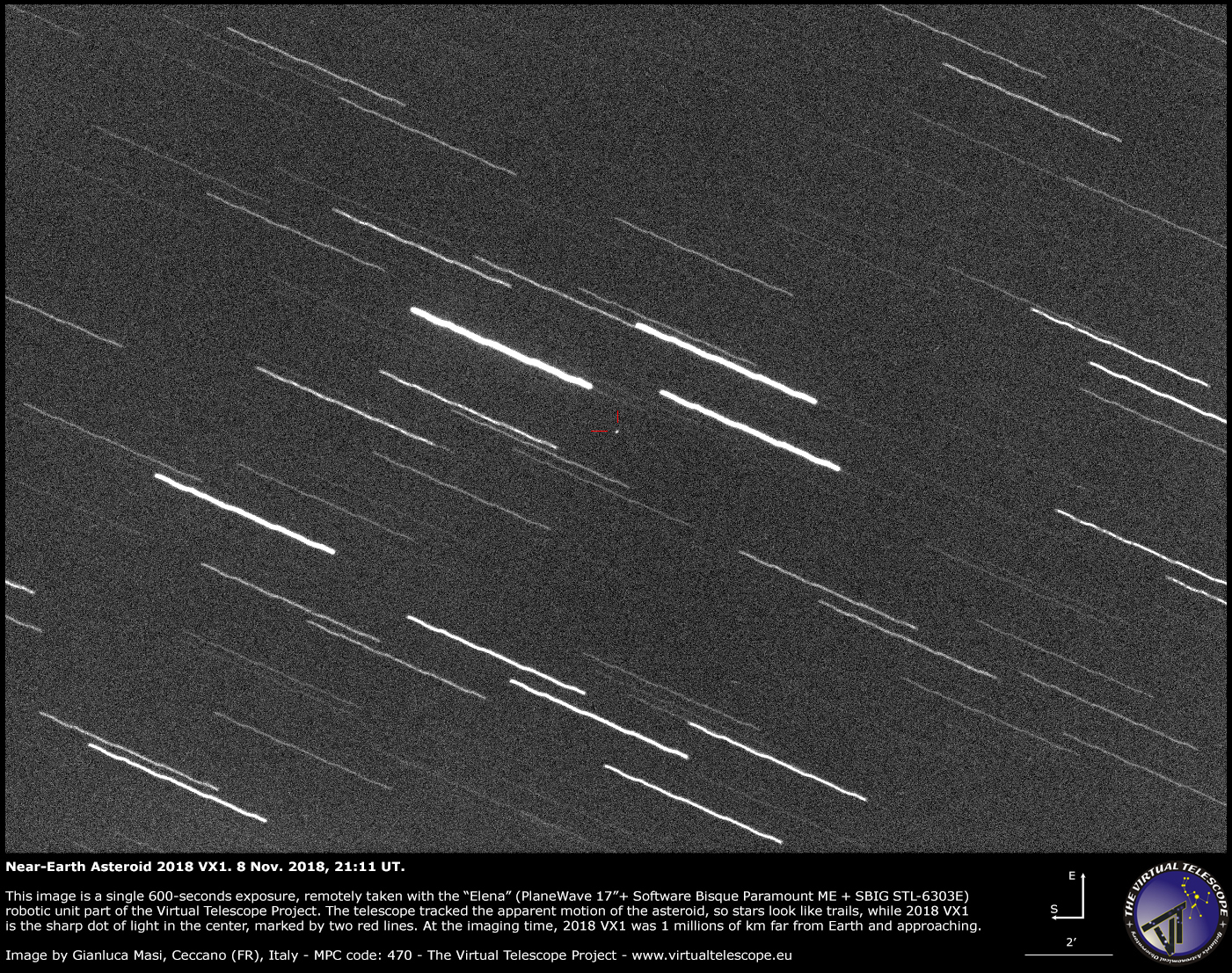How to Watch a Near-Earth Asteroid Zoom Closer to Earth than the Moon

Three chunky asteroids will zoom by Earth this weekend, and one of them is getting closer to our planet than the moon itself.
On Saturday (Nov. 10), the near-Earth asteroid 2018 VX1 will zip within about 236,100 miles (380,000 kilometers) of Earth. That's closer than the moon, which hangs out about 238,900 miles (384,400 km) away as it orbits Earth.
While this space rock encounter is close, it won't pose any danger to Earth, said astrophysicist Gianluca Masi, founder and director of the Virtual Telescope Project in Italy, which is live-streaming the celestial show online here starting at 1 p.m. EST (18:00 UTC) on Saturday. [Black Marble Images: Earth at Night]
"There is not any risk of impact [on Earth]," Masi told Live Science. "While one of them will come basically as close as the moon, that distance is still a lot."
The other two asteroids won't venture as close to Earth, but have still grabbed the attention of scientists. These include asteroid 2018 VS1, which will pass about 861,700 miles (1.38 million km) away from Earth — almost four times as far away from the Earth as the moon is — at 9:03 a.m. EST (14:03 UTC).
Asteroid 2018 VSI is between 43 and 92 feet (12 to 28 m) in diameter.
Meanwhile, asteroid 2018 VR1 is expected to fly by Earth at 9:19 a.m. EST (14:19 UTC) on Saturday. This asteroid is even farther away — about 129,000 miles (5 million km) from Earth. This near-Earth asteroid is between 45 and 100 feet (13 and 30 m) in diameter.
Sign up for the Live Science daily newsletter now
Get the world’s most fascinating discoveries delivered straight to your inbox.
People here on Earth will be able to see the star of the show — asteroid 2018 VX1 — online at about 1:20 p.m. EST (18:20 UTC), "the moment of its minimum distance from us," Masi said. This particular asteroid was discovered by scientists at the Mount Lemmon Survey, near Tucson, Arizona, just a few days ago, on Nov. 4. Two days later, the Minor Planet Center announced the discovery, estimaging the asteroid's diameter to be between 26 and 59 feet (8 and 18 m).
The Virtual Telescope snapped the above photo of asteroid 2018 VX1 with a single, 600-second exposure on Nov. 8.
"The telescope tracked the apparent motion of the asteroid; this is why stars show as long trails," Masi said. "The asteroid looks like a sharp dot of light in the center of the image, marked by two red lines."
Originally published on Live Science.

Laura is the archaeology and Life's Little Mysteries editor at Live Science. She also reports on general science, including paleontology. Her work has appeared in The New York Times, Scholastic, Popular Science and Spectrum, a site on autism research. She has won multiple awards from the Society of Professional Journalists and the Washington Newspaper Publishers Association for her reporting at a weekly newspaper near Seattle. Laura holds a bachelor's degree in English literature and psychology from Washington University in St. Louis and a master's degree in science writing from NYU.









